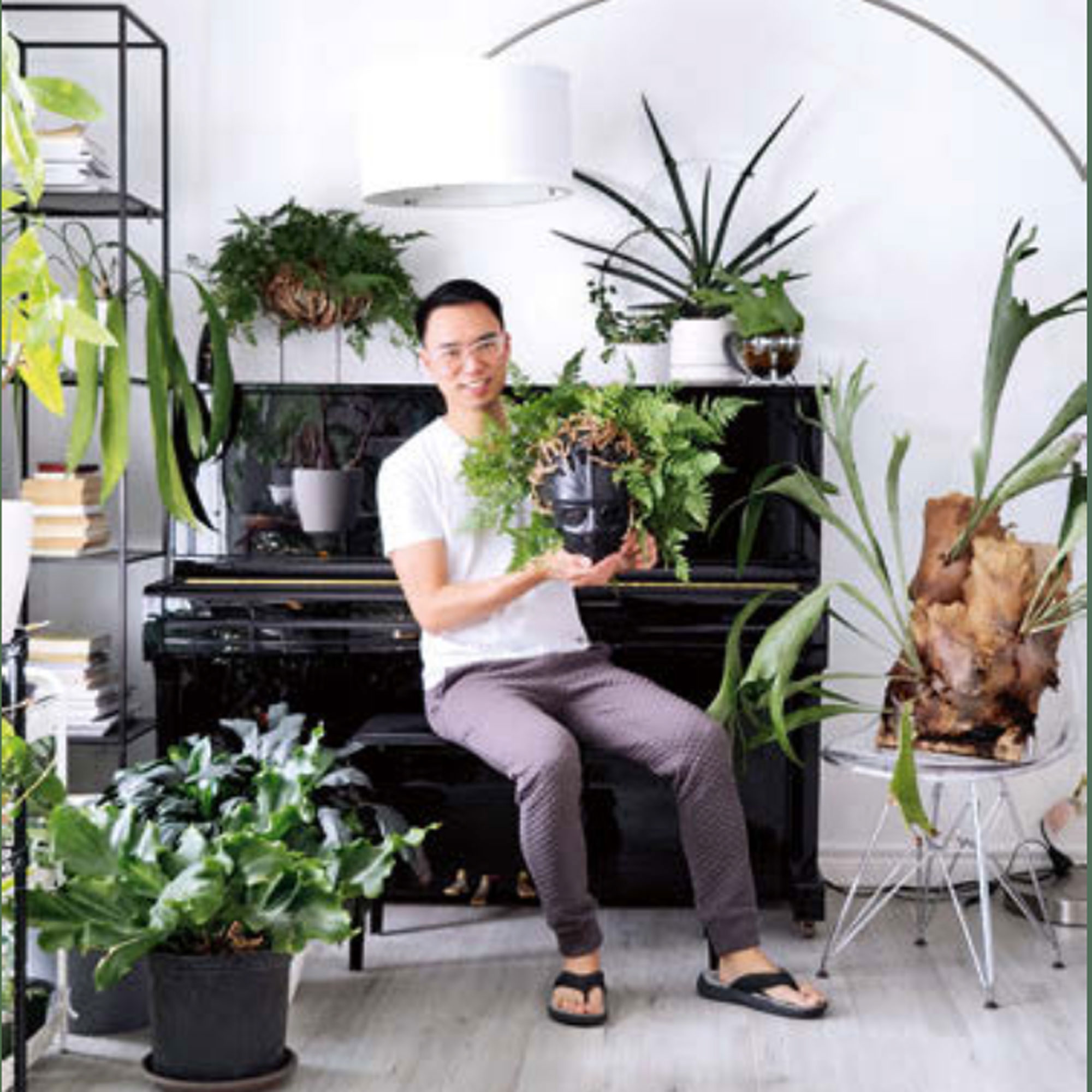How to Overwinter a Boston Fern — Lush and Green, Learn What to Do to Protect These Beauties During the Frost
If you've enjoyed this leafy plant in your garden all summer long, now is the time to think about guarding them during the freeze and here's how

Boston fern plants work well planted up in containers on decks and patios as a seasonal accent plant then brought indoors as a houseplant when temperatures dip and frost threatens. Plant them in hanging baskets, in raised containers, or on plant stands, so their fronds drape down to create a graceful focal point.
These ferns aren't tolerant to frost so if you're growing them outdoors they will need to be overwintered as part of your fern care routine to make sure you get the best out of them. It's easy to overwinter a Boston fern in a covered area, as well as indoors with the rest of your houseplant collection.
Meanwhile if you live in Zones 9-11 these tropical beauties can also be grown in the ground year round with other shade-loving varieties, and left outside to thrive with a little extra care. Now find out how to overwinter Boston fern plants with our easy guide.
How to Overwinter Boston Fern Plants

Boston ferns are popular outdoor plants and some of the best plants for an indoor zen garden, so bringing them inside during the winter isn't such a bad idea. And when it comes to how to overwinter Boston fern plants, things are pretty straightforward. It depends on your climate and where exactly you're growing them outdoors.
"Boston ferns have such beautiful broad fronds. They are an immediate vibe when added to any décor or, if you are lucky enough to live in their hardiness zone, any yard," says plant expert and author of Happy Plants, Happy You, Kamili Bell Hill. It's fair to say that Boston ferns can be difficult indoors, as Kamili points out. Plants that have thrived outside tend to be tougher though, and transfer inside more easily.
So, if your plant has been outside and you live in a cold climate, prepare your Boston fern for winter with this easy six-step guide.

Kamili Bell Hill combined her love of plants and design to curate online community PlantBlerd, where she pairs beautiful houseplants with simple styling, care and growing guides. After noticing a lack of social media platforms highlighting houseplant collectors that look like her, Kamili also established Instagram community @BlackPeople.WPlants featuring Black houseplant collectors from around the world.
A Step-By-Step Guide

So, what exactly needs to be done when overwintering your Boston fern? Well, here's everything you need to know to get the best out of this heavenly green beauty.
Step 1: Get your plant in shape before bringing it indoors. Trim off any brown, dry or damaged fronds, cutting them back to the base. Be careful not to damage any new growth, and don't take off too many leaves, as this can stress the plant. This is not the time for drastic pruning, as you still want your plant to look good, but snipping faded foliage off at this stage will help to encourage healthy growth for the new season.
Step 2: Check for pests too before bringing your Boston fern indoors and exposing other plants to bugs it might be carrying. It could potentially be harboring aphids, thrips, or whiteflies, so a thorough inspection before overwintering is the best defense. Don't forget to check the undersides of leaves too. If you spot anything treat immediately with insecticidal soap or neem oil.
Step 3: Decide on the right location for overwintering your fern. The best idea is to bring the whole container indoors and not repot at this stage. If you aren't growing your outdoor Boston fern in a pot, it's also advisable to lift it, pot it up and bring it indoors. Take care not to damage any roots when doing this. Choose a cool, dry covered area, like a basement or porch, to overwinter your plant. Then treat it in the same way as you would treat a Boston fern you're growing as a houseplant. "Ferns will grow well with daily temperatures in the 60–80 F range," says indoor plant expert Darryl Cheng, author of the The New Plant Collector: The Next Adventure in Your House Plant Journey. Make sure your plant isn't exposed to drafts either as this will stress them. Also they should not be positioned too near radiators as this will cause them to dry out.
Step 4: Your plant won't thrive without light. "You should get adequate growth if your average indirect light is above 100 FC (20 μmol), but the plant will do much better in the 400–800 FC range (80–160 μmol)," says Daryl Cheng. Take care on sunny winter days too. "Most ferns can tolerate between 1–2 hours of direct sun, but it is critical to keep up with watering. Use a white sheer curtain to diffuse the sun if the duration of direct exposure will be longer."
Step 5: Reduce watering while your plant is dormant during winter, as is the case with other houseplants. When temperatures are lower your Boston fern won't need as much water. Test the soil with your fingertip to check how moist it is, or use a soil moisture meter if you want to be totally accurate. You will probably need to water only once a month, depending on the exact conditions of your plant.
Step 6: There is no need to fertilize your Boston fern during winter as the plant is dormant so nutrient requirements are low. Fertilizing them in winter can actually be detrimental and burn the roots. As with most plants the time to fertilize your Boston fern is in spring and summer.

Darryl Cheng is the author of The New Plant Parent: Develop Your Green Thumb and Care for Your House-Plant Family (2019) and the creator of House Plant Journal, a leading source for advice about growing house plants on Instagram and the internet. His techniques, based on an analysis of the conditions that different plants need to thrive, along with careful case studies, have helped thousands of indoor gardeners achieve satisfying results.
FAQs
Does my Boston fern need high humidity during winter?

Boston ferns like high humidity all year round including winter. They are tropical plants so it's important to give them the conditions they crave. Give them the right care during winter and the gorgeous fronds will bush up fast to replace any foliage you trim away at the end of summer.
"Most ferns will grow well with average room humidity (40–60 percent) but your task of keeping up with watering will be slightly easier with higher humidity (60–80 percent)," says Darryl Cheng. Keep a mister handy to spritz the leaves or hang your fern in a planter in the shower. It will benefit from being around other plants too which will help to create that jungle effect.
Test the humidity of a room with a mini digital indoor hygrometer like this ThermoPro TP49 Digital Hygrometer from Amazon.
How do I overwinter a garden fern in Zone 9-11?

If you live in a warm climate like California or Florida, overwintering a Boston fern is easy. For garden ferns grown in hardiness zones 9 to 11, first tidy up your plant to remove any dead, dry, or damaged foliage. This should be done in late fall.
Next, spread a protective layer of mulch around the base of the plant, which will also help the soil retain moisture. Water as necessary throughout the winter to keep the soil moist but not sodden. It's not necessary to fertilize your plant during winter.
Your Essential Plant Care Pieces

Price: $19
This stylish mister is a great idea for spritzing humidity-loving ferns, orchids, and palms. The clear glass bottle comes with an easy to use white plastic trigger sprayer.

Price: $59.95
This Boston fern plant is perfect for adding a touch of green decor to indoor or outdoor settings. Comes with a hanger so ideal for patios or back porches, or indoors in the bathroom.

Price: $24
From the Terrain brand, this simple cement pot in a woven hanger is perfect for displaying a trailing Boston fern. For indoor use only, wipe clean with a damp cloth.
The Livingetc newsletters are your inside source for what’s shaping interiors now - and what’s next. Discover trend forecasts, smart style ideas, and curated shopping inspiration that brings design to life. Subscribe today and stay ahead of the curve.
Lifestyle journalist Sarah Wilson writes about flowers, plants, garden design and trends. She has studied introductory garden and landscape design and floristry, and also has an RHS Level 2 qualification in the Principles of Plant Growth and Development. In addition to homesandgardens.com and livingetc.com she's written for gardeningetc.com, Real Homes, Modern Gardens and Country Homes & Interiors magazines. Her first job was at Elle magazine, during which time a trip to the beautiful La Colombe d'Or in St-Paul-de-Vence led to an interest in writing about all things botanical. Later as lifestyle editor at Country Homes & Interiors magazine the real pull was the run of captivating country gardens that were featured.